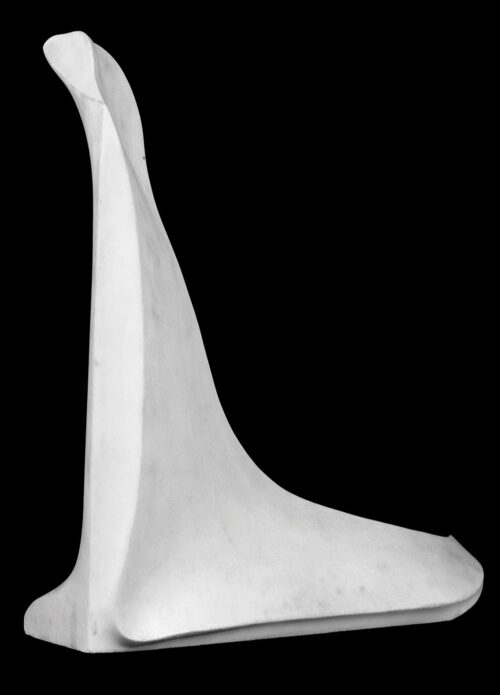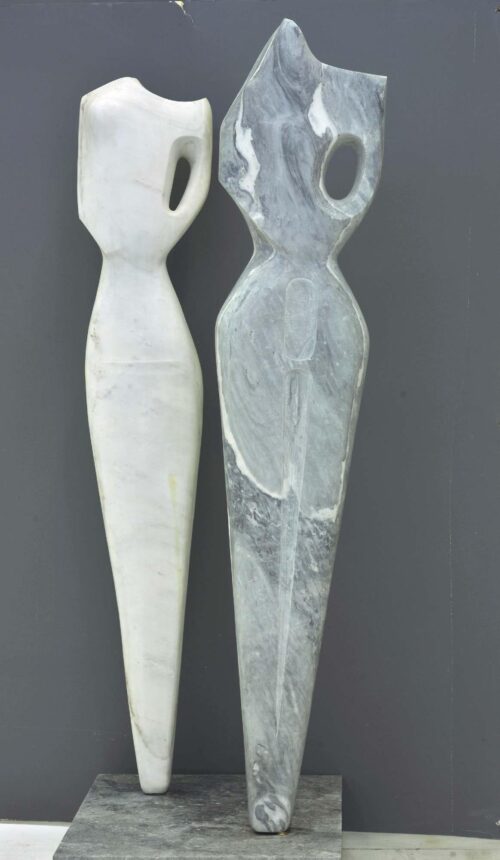
Lameras Lazaros (1913 - 1998)
Touch I, [1979]
He came from the island of Tinos. His early studies were with Thomas Thomopoulos at the Athens School of Fine Arts (1932-1938). On an Academy of Athens scholarship, he continued at the Ecole des Beaux Arts in Paris with Jean Boucher, winning the first prize in 1939. The outbreak of World War I forced him to interrupt his studies and return to Greece. He was founding member of the avant-garde group “Akraioi” [Extremists], led by Alekos Kontopoulos, established in 1949. In 1953, his Monument to the Unknown Political Prisoner was awarded at an international competition and was subsequently on show at the Tate Gallery, London. In 1956, he was elected regular member of the International Institute of Letters and Arts and in 1957 received the first prize in sculpture by the Municipality of Athens. In 1960-1987, he was professor at the Department of Plastic, School of Architecture, National Technical University of Athens. In 1969, he published a study entitled “Πλαστική” (Plastic) and in 1975 the “Χωροθετικό διάγραμμα γλυπτών έργων Δήμου Αθηναίων Νεωτέρας Ελλάδος” (Location Chart Of Modern Greek Sculptures of the Municipality of Athens). He was also awarded the Commander of the Phoenix medal of the Hellenic Republic.
His exhibition activity was prolific, beginning with group exhibitions. In 1933, he exhibited with “Omada Techni” and then with “Eleftheroi Kallitechnai” [Free Artists] (1937-1939). He also took part in Panhellenic exhibitions, the Sao Paulo Biennale (1955, 1961) and the Venice Biennale (1960) as well as in the exhibition “Metamorphoses of the Modern” at the National Gallery (1992). In 1979, a solo exhibition of his work entitled “Touch – Art – Child” was mounted at the National Gallery for the benefit of deaf-mute children.
A sculptor who comfortably moved between traditional art and contemporary currents, Lazaros Lameras revealed through his non-figurative sculptures his taste for experimentation with avant garde trends as early as 1932; between 1945-1948 he created his first abstract compositions. In his figurative works, which he never entirely abandoned, he was mainly interested in the structural characteristics of the composition, avoiding narrative elements, and using typical Archaic plastic elements. From around 1958, his involvement with abstraction led him to plant-like works, in which verticality and motion play a major part. From 1960, he produced works for blind adults and children, which produce sound and combine movement with sculpture and painting. He also made heroa and monuments.

Touch I, [1979]

Penteli in Ecstasy, 1948

Hiroshima, 1960

Two Girls, 1950

Musical Instrument, 1945

We use cookies to make our site work properly, to personalize content and ads, to provide social media features and to analyze our traffic. We also share information about how you use our site with our social media, advertising and analytics partners. Read the Cookies Policy.
These cookies are necessary for the website to function and cannot be switched off in our systems. They are usually only set in response to actions made by you which amount to a request for services, such as setting your privacy preferences, logging in or filling in forms. You can set your browser to block or alert you about these cookies, but some parts of the site will not then work. These cookies do not store any personally identifiable information.
If you disable this cookie, we will not be able to save your preferences. This means that every time you visit this website you will need to enable or disable cookies again.
These cookies tell us about how you use the site and they help us to make it better. For example these cookies count the number of visitors to our website and see how visitors move around when they are using it. This helps us to improve the way our site works, for example, by ensuring that users find what they are looking for easily. Our website uses Google Analytics for statistics reporting.
Please enable Strictly Necessary Cookies first so that we can save your preferences!